|
Each week smile in the sky feature a different yoga pose and 5 physical health benefits and 5 mental health benefits related to it
This week…headstand. [Sanskrit translation: Sirsasana: sirs (head), asana (pose)]. Headstand is considered the king of the poses. Take a safe and gradual development to the pose: begin with dolphin, then knees to chest, then headstand. 1. Physical benefit: NECK STRENGTHENING We use the neck muscles so much in our daily life, often without awareness. I always focus on awareness and mobility of the neck in class warmup. Direct strengthening of the muscles in the neck is rare and important, and central to protecting from pain in this pose. Mental benefit: PROBLEM SOLVING Sometimes seeing things from a different perspective can allow us to come to a decision. Inverting our view can help us gain the clarity to reframe what we see. 2. Physical benefit: RELIEVE SPINAL PAIN Changing the distribution of weight so that the pelvic girdle doesn’t bear the heavier weight of the upper body can ease stiffness in the back and relieve pain. Mental benefit: LESS STRESS Decreased muscle tension and improved spinal alignment can lower stress levels. 3. Physical benefit: IMPROVED DIGESTION Inversions can assist movement of food and drink in the body and help remove any stuckness in the digestive system. Mental benefit: BETTER SLEEP Improved blood circulation can assist relaxation, helping to counter insomnia. 4. Physical benefit: CORE STABILITY Use of the mula bandha is crucial to maintain this pose, utilizing the deep abdominals. Variations using the legs, performing something like an inverted sit-up are a great way to challenge balance and tone the abdominals. Mental benefit: CONCENTRATION/DHARANA Practice of maintaining focus on a single point (drishti), can help us improve concentration levels. 5. Physical benefit: PRANAYAMA Breath is long, smooth and deep to find balance between maintaining muscle strength/activation and relaxation. Breath is the key to finding that ‘sweet spot’: a feeling of weightlessness when the balance point in the pose is found. Mental benefit: IMPROVED MOOD Healthy blood flow can improve neurotransmitter function in the brain (eg serotonin and dopamine), to improve mood. To learn more about the mind-body connection and ways to improve your mental health see www.smileinthesky.com for workshops for mental health, yoga, and research consultancy. Next week… wheel pose[Chakrasana]
0 Comments
Our brain and body are linked in a myriad of ways. When you lift that coffee cup to your lips, electrical signals are being sent from your brain to your fingers, and back from your fingers, up the bundle of neurons in your spinal cord, back to the brain. Our nervous system is constantly relating information about the temperature, size, and weight of the cup and its contents, as well as the lips, fingers and tongue, so that you do not drop the cup, miss your mouth or burn your tongue. At a speed that would make Usain Bolt shiver! This subjective sense of where your body parts are relative to each other, is called proprioception.
Different body parts contain more, or less nerves, which relate to the dexterity of movement required, for example the fingers and hands, lips and tongue have a high number of nerve endings in order for us to play the piano, use chopsticks, talk, eat, and all of the other complex movements we do with them. Comparatively, the lower legs, for example, have fewer nerve endings. These nerves communicate with areas of the brain known as the sensory and motor ‘somatosensory map’, located in the parietal lobe, where all of the parts of the body are represented in a ratio consistent with their degree of differentiation. This representation is known as ‘homonculus’, (ho-MUN-q-lus) which means "little man" in Latin. See here for a short video. Practice of yoga asana (postures), with awareness, may allow the brain to make representation of body parts more accurate through repeated intentional movement, strengthening the connection between body and brain. See here for a short balance practice to explore your proprioception. More to come soon on the interaction of proprioception and neuroplasticity... Happy Friday loves! To learn more about the mind-body connection and our services, including workshops for mental health, _yoga_, and research consultancy, please see www.smileinthesky.com We are all courageous, universal creatures: navigating the new. Every moment is new. Every experience is new. Everything is new. Every moment of every day. But sometimes we can become stuck: our beliefs limiting our perspective, repeating the past. Our (often unconscious) beliefs, developed from childhood, underlie our conditioning. These samskaras, or impressions, created through repeated behaviours or habits, are the foundation of our thought biases and assumptions.
Let me give an example. A friend had a very difficult breakup. He was deeply in love with his partner and they had a very happy life together. After many years together, he had to move countries, but his partner just would not go with him. He felt rejected and grieved, his heart was broken, wounded, and slowly recovered, the scars slowly fading. Not long after, he met someone who offered him her love but he could not accept it. His assumptions were of love imposing limitations, his experience in love having been so painful, he found it hard to see the light through the dark. Perhaps his belief was that love had to involve much sacrifice and pain, which ultimately held him back from a direct experience of what love could be, what his life could be, how he could feel in the moment, with this woman, with this love. Stuck in old thought patterns, he found it impossible to be present and free from his conditioned beliefs. Thankfully he discovered that meditation can allow us to find a space between action and reaction. In this gap we can observe ourselves, develop insight into ourselves, and create a space in which to make a different choice. Our behaviours: whether outward or inward (ie thoughts), are changeable, and over time repetition of these behaviours can create new habits. Development of the observing self, with practice of techniques such as mindfulness, combined with psychotherapy, help us to identify thoughts and beliefs that do not serve us, and be present. When we recognize these beliefs, we have the power and ability to simply let them go. Unburdened from these counterproductive beliefs, we can surrender to the magic, beauty and newness of the journey of life. Namaste. For a fascinating exercise to discover your core beliefs, explore this video. See here for a short mindfulness practice. To learn more about being present in the moment and changing habits, see our website for information on our workshops for mental health. They incorporate meditation, breathing techniques and information from psychology, neuroscience and biomedicine, to empower you to take charge of your choices and live a life sparkling with curiosity, courage and freedom. Each week smile in the sky feature a different yoga pose and 5 physical health benefits and 5 mental health benefits related to it
This week…handstand. [Sanskrit translation: Adho Mukha Vrksasana: adho mukha (downward facing), vrks (tree) asana (pose)]. Handstand is a pose almost everybody is familiar with. And yes, the picture above by no means shows handstand: it is an action shot in attempting it. I considered long and hard whether to include this pose as holding it eludes me thus far! I am not afraid to show my limitations. Many of us attempt Adho Mukha Vrksasana, and many are put off by the high potential for stacking it! If done correctly, with the right alignment, breathwork and strengthening, this is yoga. Attempting handstand a couple of drinks in at the Easter family get together – that’s just showing off! As with all inversions, observe contraindications (glaucoma and high blood pressure are two conditions that are not recommended for inversions): always practice safety first. 1. Physical benefit: FACELIFT! Inversions allow for increased blood flow to the face, head and brain. Increased oxygen in the blood can improve the appearance of skin and give us a healthy glow. Do you need any other reasons to try this pose?! Mental benefit: INCREASE SELF-WORTH The change of perspective from ‘I can’t’, to ‘I do’, in attempting a pose such as handstand, is very powerful. We often surprise ourselves with our abilities. Seeing what we are capable of might just be enough to acknowledge that you are not ‘your story’: the thoughts and beliefs you have told yourself may not be serving you anymore. So many of us suffer from low self-esteem: a shake-up of self perception is most definitely in order! See here for a simple exercise to reframe negative beliefs. 2. Physical benefit: LOWER BACK RELEASE Inversions such as handstand, headstand and shoulderstand can allow for relief of back pain. Changing the distribution of weight when the legs aren’t taking the impact and weight of the body can allow release in the lower back. Mental benefit: UNBRIDLED JOY! It is very difficult to describe the childlike happiness, giggles and fun that can arise from attempting this pose. It’s so important to bring a lighthearted attitude to challenges, and this pose in particular tends to bring a silly grin to people’s faces. Give it a shot and experience it for yourself! 3. Mental benefit: OVERCOMING FEARS Many people become nervous when the being upside down or falling, is a real possibility. The best (and only!), way to conquer your fears is by confronting them. Graded exposure, (gradually building up to handstand), is advised, rather than flooding: ie attempting to jump straight into it. However, everyone is different and sometimes a tumble is enough to pleasantly surprise you with what you are capable of, and what your body can bounce back from. See here for an interesting article about confronting fears to overcome anxiety. Physical benefit: SHOULDER STRENGTHENING After adequate warmup, use of the shoulders to hold the pose will create more stable shoulder joints. Ensure the tops of the shoulders are tracking away from the ears and are stacked in line with the wrists, fingers spread wide. 4. Physical benefit: WHOLE BODY TONING Engagement of the biceps and triceps, core and length of the legs is necessary to maintain this pose. See this sequence to prepare for a safe handstand. Mental benefit: RESILIENCE The beauty in each pose comes from the hard work that has gone into working towards something for a long period of time, slowly chipping away at it, improving day by day. The commitment, dedication and drive required to master any pose may transfer to other areas of life. Building positive beliefs about your abilities is one aspect of improving resilience. See here for 10 ways to become more resilient. 5. Physical benefit: CARDIOVASCULAR HEALTH This inversion allows for greater ease in draining blood from the legs, giving the heart a rest and relieving some of the pressure. See this detailed article for more information on the potential effects of inversions on the cardiovascular and lymphatic system. Mental benefit: SELF-ACTUALISATION It may seem like a big call to claim that a handstand can lead us to self-actualisation. Self actualization is a term introduced by Abraham Maslow, to refer to the growth of an individual toward fulfillment of the highest needs; those for meaning in life, in particular. Yoga practice may fulfil some “being” needs related to creative self-growth, developed from the fulfillment of our potential and finding meaning in life. See here for more on Maslow’s hierarchy of needs. Don’t give in to your fears: believe in yourself. Find a safe preparatory sequence, develop your strength, and give handstand a go. Just be careful rocking it party-trick style: this is not yoga. Having said that when I manage to hold the pose for a minimum of five breaths consecutively and consistently I will be over the moon to showboat my achievements! That day will be cause for celebration. Give more a few more months, or years…the joy is in the journey. To learn more about the mind-body connection and our services, including workshops for mental health, _yoga_, and research consultancy, please see www.smileinthesky.com Next week… headstand [Sirsasana] Each week smile in the sky feature a different yoga pose and 5 physical health benefits and 5 mental health benefits related to it
This week…flying pigeon pose [Sanskrit translation: Eka Pada Galavasana: eka (one) pada (legged) galav (dedicated to galava) asana (pose)]. This pose requires balance, strength, and a high level of hip flexibility. Although by no means a simple pose to master, practice in maintaining ease in difficult postures may transfer into life. 1. Physical benefit: HIP OPENING The strong pressure created by the bent front leg compressed by the arms to open the outer hip requires an adequate warmup and flexible hip joints. See here for a preparatory sequence. Mental benefit: EMOTIONAL RELEASE Hip openers are traditionally associated with the release of stored emotional tension in the hip. Although this is a strong pose, with practice it can become less effortful, and may be a calming way to allow emotions to flow more freely. See this fascinating article for more on how science is discovering how our minds and bodies carry our emotional stress. 2. Physical benefit: IMPROVED BALANCE Spreading the fingers wide provides a solid base, with finger tips active and engaged, and the space between thumb and forefinger pressing the earth away. This creates a dual action: pressing downward to allow you to fly upward. Mental benefit: MINDFULNESS ‘Paying attention, in the present moment, on purpose, non-judgmentally’, is one definition of mindfulness. Clarity in the mind, or the lack thereof, is made abundantly clear when your nose is wavering dangerously close to the earth! See here for a discussion of the origins of mindfulness and for a sequence of poses in which to practice it. 3. Physical benefit: CORE STRENGTHENING As with all arm balances, engage the pelvic floor. Engaging two of the yogic locks: mula bandha and uddiyana bandha support the lower back and keeps legs lifted, and assist focus and concentration. See here for more on bandhas. Mental benefit: IMPROVED CONCENTRATION The ease and beauty of this pose can be experienced fully when you find the balance point, and experience weightlessness. Long slow breaths in and out through the nose assist stability in the pose. The point of focus, or ‘Drishti’ is about 30cm ahead of the hands, or alternatively on the breath. 4. Physical benefit: SHOULDER STRENGTHENING: Chatauranga dandasana and plank pose are great preparation for this pose, maintaining an open chest. Mental benefit: VISUALISATION Before entering the pose, try closing the eyes and visualizing yourself in the perfect posture, flying your pigeon and maintaining the pose with ease. Activation of the visual cortex through imagination helps prepare the body for the pose. 5. Physical benefit: LEGS AND GLUTEAL STRENGTHENING Keep the back leg active from buttocks to toes. This constant energetic lift will help maintain the balance. Mental benefit: SELF-CONFIDENCE When you create this pose, a joyous feeling of achievement is well deserved. Bask in the glow of doing something new, appreciate your body and mind and all it can do for you. Celebrate all that you are! For more tips on improving self-confidence see here. Ideally our yoga practice is a both a metaphor for life, as well as a toolkit for life: a daily opportunity to ‘be with’, and experience difficult sensations and emotions in a safe way while we do our best to maintain poise. But most importantly having a good giggle when things don’t quite go to plan! So when that inevitable fall occurs we pick ourselves up, and either give it another go or allow and accept our current capabilities, be kind to ourselves, and rest. To learn more about the mind-body connection and our services, including workshops for mental health, yoga, and research consultancy, please see www.smileinthesky.com Next week...handstand [Adho Mukha Vrksasana] As the rapidly growing moon pulls the tides ever higher, waves exploding in a flurry of energy, it makes intuitive sense that the water and energy within our bodies (around 60%), is pulled upward. From the chakra-based perspective of kundalini yoga, energy being pulled upwards towards the crown chakra indicates a communion with the higher energies of the cosmos. However in order to access this level of union with the cosmic consciousness – the goal of yoga in Samadhi, the lower chakras must be full, strong, and balanced otherwise things can quickly spiral out of control. The lead up to tomorrow’s full moon in virgo can take us more into our heads – our minds, our thought processes. Analysing, ruminating and worrying are some examples of this. In order to counter this tendency and maintain calm, yoga has many techniques to help. One is pranayama: intentionally slowing down the breath, and focusing on the outbreath: a long, gentle, deep exhale can create a calming wave motion in the body to echo the ocean. Engaging ujjayi breath with an oceanic sound like the waves can help create peace in the body, mind and spirit. Another technique is asana: physical movement/postures with the body. In highly energetically charged moments such as around a full moon, grounding is very powerful. This can mean slowly moving from pose to pose, staying low to the earth, stimulating the root chakra with lots of focus on hip stretches on the mat area ideal. See here for a simple 20 minute grounding sequence. Going barefoot where possible and resting are very beneficial to bring the energy downward too. Meditation can be helpful too: visualising a wave of blue water cleansing your body, rising up towards your heart on the inhale, and rippling slowly back down on the exhale is a calming technique to try. Most of all, be gentle, kind, and slow down activity: with yourself, and with those around you. Harness and receive the energy, and know that change is inevitable in life. This too shall pass. Namaste. Each week smile in the sky feature a different yoga pose and 5 physical health benefits and 5 mental health benefits related to it.
This week...one-legged pigeon pose [sanskrit translation: Eka Pada Rajakapotasana: eka (one) pada (legged) raja (king) kapot (pigeon) asana (pose). Protect the front knee joint: move into the pose by moving the back leg back (after following a thorough warmup and practice). There is so much going on in this pose: chest, shoulders and hip opening, with a lot of flexibility required. As I often mention in these blogs some poses are best thought of as a front opener rather than ‘back bend’ to avoid crunching the lower back. The breath is at the core of the pose, as with all of yoga. If the breath becomes laboured, shallow or short: ease off the intensity until you can maintain long full breaths. 1. Mental benefit: REFRAMING Taking the gaze upward to the sky shows us a perspective we don’t take often enough. A different view, seeing problems (or reality), in a different way can help us break out of negative patterns. Physical benefit: FULL LUNG CAPACITY Opening the chest creates space for the lungs, making full breaths possible (very important in this pose!). 2. Mental benefit: BRAVERY Fear serves an evolutionary purpose. Experiencing fear provides the impetus for courage. Surprise yourself with what you can do and with consistent practice this pose will be a beautiful shape and opens the body and mind. Physical benefit: SHOULDER OPENING A high level of tricep flexibility and underarm opening is essential in this pose in order to reach back for the foot of the bent leg. 3. Mental benefit: MEDITATION This pose may come easily to some but most have to work hard for it. The breath is crucial throughout yoga and in this pose it can help to mentally visualise and bring awareness to areas that feel tight. See these short techniques for meditation. Physical benefit: GROIN OPENING Although the energy required to hold this pose increases heat in the body, the opening of the groin allows heat to escape thus cooling the body down. 4. Mental benefit: SELF-TRUST Exposing the throat is a vulnerable position and this body-mind communication is one way to be with, and allow discomfort, in a safe environment. Acknowledgment and allowing of experience is central to Acceptance and Commitment Therapy (ACT). For more on this mindfulness-based therapy used for eg anxiety and depression please see here. Physical benefit: HIP OPENING One-legged pigeon pose creates a strong hip flexor stretch in the front pelvis of the back leg: you can walk back leg further back to increase the stretch. Go gently and breathe into this area. 5. Mental benefit: ACCEPTANCE Although patience and practice will get you far in this pose, an important lesson is to recognise limits – of your mind, energy, and body. In this way we show respect for our bodies and minds. Rest is so important to grow new cells and to heal: after completion of this pose fold forward to release the back and be gentle with yourself. Physical benefit: BACK & NECK FLEXIBILITY Central to this pose: strength in the back body and neck combines with mobility between the vertebra to allow the full expression of the pose. To learn more about the mind-body connection and our services, including workshops for mental health, yoga, and research consultancy, please see www.smileinthesky.com Next week... flying pigeon pose [Eka Pada Galavasana] Some days, or weeks, the momentum of life seems to be so easy. We move from one task to another, from one social engagement to the other, feeling as if we are in an almost effortless flow. Energy is high, we respond to smiles from others, the world feels like a fluid place where anything is possible and we are on our path.
At some stage in this flow, inevitably, momentum wanes. At first we think we can go-go-go without a rest: especially if we are passionate about our work and love what we are doing. But we are human. We are not machines. We breathe, we feel, we falter. We make mistakes, we slow down. This is not a fault! When our bodies and minds aren’t quite working to the high standard we expect them to, aren’t responding in their usual way, we often chastise ourselves: ‘I should be able to finish this’, ’I should be doing more’, are the lighter end of the spectrum of self-criticism. Self-hate is the extreme end. But when we can learn to experience this change in energy, to allow, to observe, not to react, but to treat ourselves with softness, with kindness, this is the lesson. Not to push, to force, to become angry, aggravated, or resentful. Perhaps a few tears need to be shed. Perhaps a nap is in order! When we can allow whatever needs to be felt, to pause, to breathe: this is finding true alignment with our authentic selves. The phrase that sings to me in this moment: You are enough. Just as you are right now, in this moment, nothing needs to be changed or improved. You are enough. |
Details
Harriet Sciberras
Director and Founder of smile in the sky. Archives
April 2017
Categories |
SMILE IN THE SKY
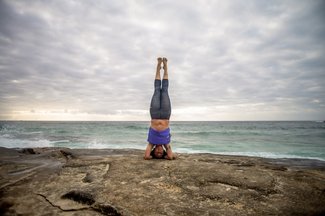
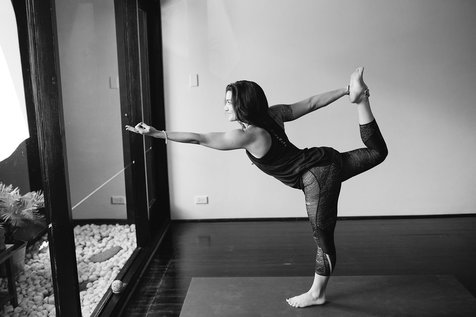
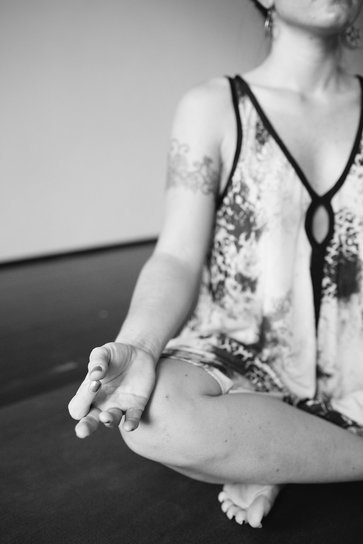
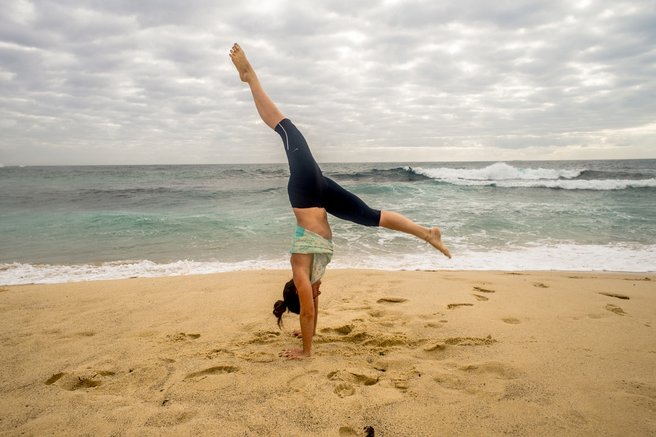
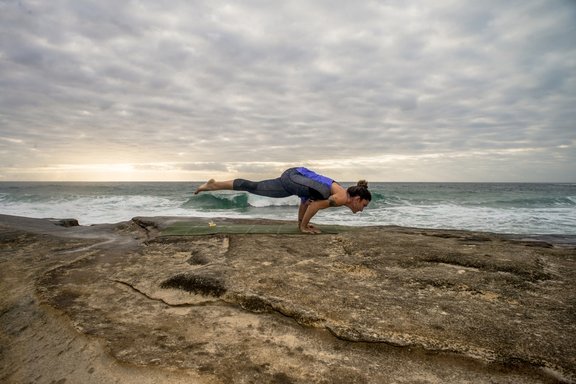
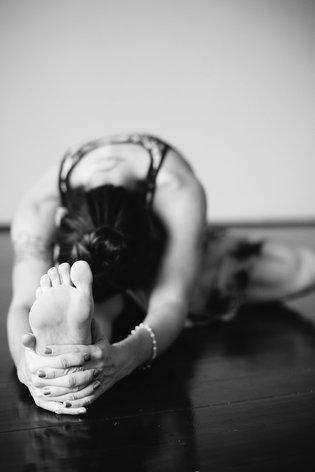
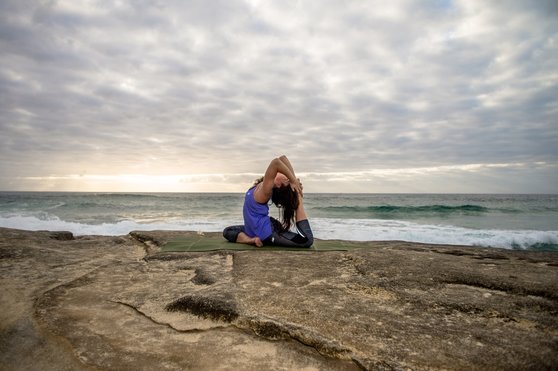

 RSS Feed
RSS Feed
